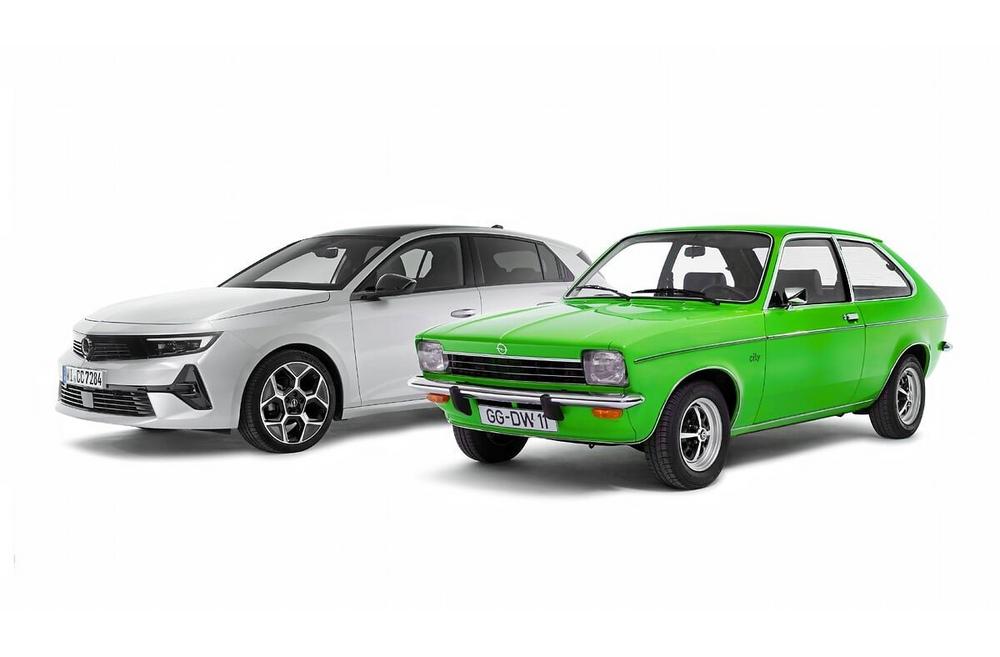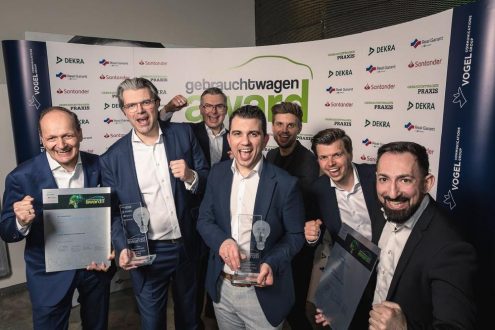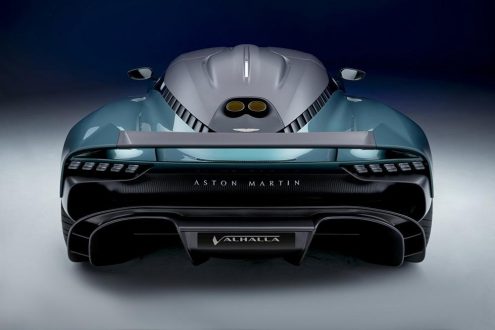
50 Years of the Opel Kadett City: The Versatile Hatchback
- City car for young families: In 1975, the sporty designed Kadett City was launched
- Hatchback with character: Large tailgate ensures highly practical benefits
- Diversity 2025: Current Astra with top technologies and broad drive portfolio
Combined values for Opel Astra according to WLTP1: Fuel consumption 5.0-6.0 l/100 km, CO2 emissions 130-135 g/km; CO2 label: D.
Combined values for Opel Astra Hybrid 48V according to WLTP1: Fuel consumption 5.0 l/100 km, CO2 emissions 112 g/km; CO2 label: C.
Combined values for Opel Astra Plug-in-Hybrid according to WLTP1: Energy consumption weighted 16.3 kWh electricity/100 km plus 1.3 l petrol/100 km; CO2 emissions 29 g/km; CO2 label B. When the battery is discharged: Fuel consumption 6.2 l/100 km; CO2 label E.
Combined values for Opel Astra Electric according to WLTP1: Energy consumption 15.6 kWh/100 km, CO2 emissions 0 g/km; CO2 label: A
Rüsselsheim. The Opel Astra is sporty, elegant, flexible and is available with a variety of drive systems like no other model in the Opel portfolio. Today, the current Astra generation seamlessly continues the success story of the compact class bestsellers with the Blitz, which began many decades ago with the Kadett. Now a very special variant is celebrating its anniversary: The Opel Kadett City turns 50. While the career of the third Kadett generation started as early as 1973, Opel went one better two years later with the City hatchback variant. Because even then, it was true that sporty design combined with a dynamic driving experience and versatility was trump! And so the engineers designed a vehicle that met both requirements with its hatchback and large tailgate – and whose design still makes many enthusiasts‘ hearts beat faster today.
Variety like no other: In 1973, the Opel Kadett C was launched
Whether as a neat family car with two or four doors or a caravan with three doors, an elegant coupé or a powerful amateur sports car with an extroverted appearance: the Kadett C family had many faces between 1973 and 1979. With a clearly defined body and a new double wishbone front axle, the rear-wheel-drive Kadett C made its debut in late summer 1973. Characteristic design features included the flat radiator grille, the bonnet with the brand’s typical crease and the front apron designed to form a spoiler. But all this was not enough for those responsible at Opel at the time. They wanted to offer customers even more choice in the successful compact-class model and at the same time further increase the practical benefits. Positioned in this way, the new Opel Kadett City arrived in 1975.
Opel Kadett City 1975: "The agile Opel with a wide range of applications"
"It not only easily swallows the largest bags from the supermarket, but also complete mountaineering or diving equipment – according to the sporting inclinations of its owner. The car, which shows off its manoeuvrability and easy loadability in everyday use, also offers the driving performance and comfort for leisure trips to the mountains or the sea." With these words, Opel advertised the Kadett City when it was launched in the mid-1970s. With the new, three-door tailgate variant, the manufacturer rounded off the range of the third Kadett generation.
The City inspired with its sleek lines. From today’s perspective, the optional 13-inch ATS alloys and 185-millimetre tyres, introduced in the following years, also contributed to the sporty design of the Kadett City. In addition, large windows provided plenty of light and a good all-round view. They increased the feel-good atmosphere for passengers and safety in equal measure.
The most striking feature compared to the other Kadett variants, however, was the characteristic hatchback of the only 3.90 metres long city car. The large tailgate opened up completely new possibilities, because "the City is intended for young families who are looking for a functional car and value a variable boot. The same applies to working people who need a compact, manoeuvrable model for commuting to work, but also value a wide range of applications in their free time," as the contemporary description read. The sloping tailgate made it easy and convenient to load the Kadett City. This was all the easier because it could be opened with the little finger thanks to a gas spring lifter that was newly developed at the time. Thanks to the intelligent rear construction of the body without inward protrusions, the flat loading area was fully usable. And when even more space for luggage, work materials or other things was required, the rear seat backrest could be folded forward in two simple steps and thus almost double the load space without further ado.
The technology of the City was largely the same as that of the rest of the Kadett C-generation: the rear axle came from the caravan, the front axle was retuned during development due to the changed weight distribution. On the engine side, Kadett City customers could choose between four-cylinder engines with 1.0 and 1.2 litres of displacement and 29 kW (40 hp), 38 kW (52 hp) and 44 kW (60 hp) at the start. The latter was also available – not a matter of course at the time – with a comfortable automatic transmission. At the IAA 1977, Opel added the 55 kW (75 hp) 1.6-litre S engine to the drive portfolio. With it the Kadett City could accelerate from 0 to 100 km/h in 13 seconds and reach a top speed of 157 km/h.
By 1979, the extremely successful Kadett C generation – and with it the Kadett City – had rolled off the production line as the last Opel compact class model with rear-wheel drive. The successor was already ready and heralded a new compact class era at Opel: The Kadett D debuted in the same year as the brand’s first front-wheel drive model.
Diversity today: Opel Astra has the right offer for every need
Opel’s latest compact class bestseller, the Astra, is produced at Opel’s headquarters in Rüsselsheim. The sporty, elegant five-door – just like the practical Astra Sports Tourer estate – offers the right solution for almost every need. The model is extremely comfortable and comes with top technologies such as the adaptive Intelli-Lux Pixel light. But this is not the only point in which it impresses. Especially in terms of drives, the current Astra generation offers a variety like no other model in the Opel portfolio. Battery-electric, as a plug-in hybrid, with a highly efficient combustion engine and also as a hybrid with 48-volt technology – customers have the full choice and can enjoy highly efficient driving pleasure. The latest Astra thus continues Opel’s tradition of always offering customers the right solution for their mobility needs – practical, efficient and at the same time packaged in a design that arouses emotions.
[1] A vehicle’s values not only depend on the vehicle’s efficient use of fuel but are also influenced by driving behaviour and other non-technical factors.
Opel Automobile GmbH
Bahnhofsplatz 1
65423 Rüsselsheim
Telefon: +49 (6142) 7-70
Telefax: +49 (6142) 77-8409
http://de-media.opel.com/de
Communications, Manager International Product
Telefon: +49 (6142) 69-22084
E-Mail: colin.yong@stellantis.com
Telefon: +49 (6142) 6921679
E-Mail: matthias.meyer@opel-vauxhall.com
Telefon: +49 (6142) 6927466
E-Mail: leif.rohwedder@opel-vauxhall.com
![]()




